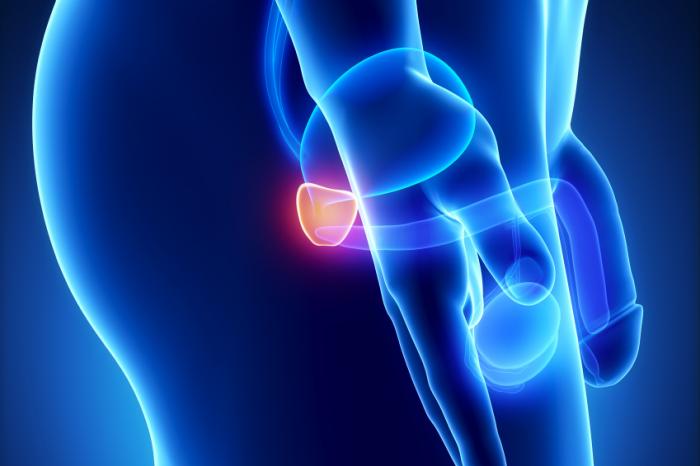Prostate cancer is the second most common cancer in American men, with 1 in 7 diagnosed with the disease in their lifetime. Now, a new study finds that a form of permanent radiotherapy – low-dose-rate prostate brachytherapy – may improve survival for patients with the disease, compared with dose-escalated external beam radiotherapy.

The team found that the men treated with LDR-PB were more than twice as likely to be free of prostate cancer after 5 years than those treated with DE-EBRT.
According to study author Prof. James Morris of the Vancouver Cancer Centre at the British Columbia Cancer Agency (BCCA) in Canada, this is the first study to compare the two techniques in the treatment of prostate cancer.
The American Cancer Society state that both low-dose-rate prostate brachytherapy (LDR-PB) and dose-escalated external beam radiotherapy (DE-EBRT) are considered to be effective treatments for prostate cancer, though they note there is more information on the outcomes of the latter.
LDR-PB is a form of internal radiotherapy in which around 40-100 pellets, or “seeds,” of radioactive material are inserted through the skin and into the prostate via thin needles. The needles are the removed and the seeds – similar to grains of rice in size – are left in place for a number of weeks or months.
During this time, the seeds emit low doses of radiation to a small surrounding area, which limits the amount of damage to healthy tissue near the prostate.
EBRT, on the other hand, involves focusing beams of radiation to the prostate gland from outside the body.
LDR-PB-treated men ‘twice as likely to be cancer-free’ after 5 years
For their study – recently presented at the 3rd European Society for Radiotherapy & Oncology (ESTRO) Forum in Barcelona, Spain – Prof. Morris and colleagues enrolled 398 men with localized prostate cancer who were deemed high risk for treatment failure.
All men had undergone androgen deprivation therapy (ADT) for 8 months – a hormone therapy that aims to lower the levels of male hormones that drive cancer cell growth.
After ADT ceased, the men underwent external beam radiotherapy to prostate and regional lymph nodes at 46 Gy (gray units – a measure of radiation dose). The men were then randomized to receive either LDR-PB or DE-EBRT, with patients who received DE-EBRT getting an additional 32 Gy of external beam radiation.
On comparing the survival of the two groups of men 5 years after treatment, the team found that the men treated with LDR-PB were more than twice as likely to be free of prostate cancer than those treated with DE-EBRT.
“Although, to date, overall survival and prostate cancer-specific survival do not appear to differ between the two groups, existing trends favor LDR-PB and an overall survival advantage is likely to emerge with longer follow-up,” says Prof. Morris.
The drawbacks of LDR-PB
Although the findings show promise for LDR-PB as an effective way to increase survival for prostate cancer patients, the team notes that the treatment does have some drawbacks.
They point out, for example, that the incidence of severe late urinary side effects was three times higher in patients treated with LDR-PB than in those treated with DE-EBRT. Study author Dr. Sree Rodda, also of the BCCA, notes that “the long-term prevalence of severe urinary toxicity in the LDR-PB patients was 8% compared to just 2% for the DE-EBRT patients.”
However, he adds that many of the severe side effects identified from LDR-PB were “temporary and reversible, or could be ameliorated by procedures,” though he admits the findings present an important challenge going forward – maintaining the effectiveness of LDR-PB while limiting side effects.
In addition, the researchers note that – though cost-effective – LDR-PB is a complex procedure that requires extensive training in order to produce optimal results, which may prevent the procedure from being adopted more widely.
Still, the team believes the study brings us a step closer to identifying the most effective treatments for prostate cancer.
Commenting on the findings, Prof. Phillip Poortmans, president of ESTRO, says:
“This study illustrates very nicely how the best results can be obtained by combining various treatment options instead of trying to get the most out of one single modality.
Brachytherapy is an extremely efficient and safe radiation oncology modality, and this trial shows that it can have a wider field of applicability than simply in very localized and low-risk tumors when combined with other techniques – in this case, androgen deprivation therapy and external beam radiation therapy.”
Prof. Morris says the team now hopes to compare the effectiveness of LDR-PB for prostate cancer treatment with temporary high-dose-rate brachytherapy implants (HDR-PB), stereotactic body radiation therapy using extreme hypofractionation, and combined surgery and postoperative radiation therapy.
Earlier this month, Medical News Today reported on a study published in the British Journal of Cancer, in which researchers detailed the development of a low-temperature plasma treatment for prostate cancer.